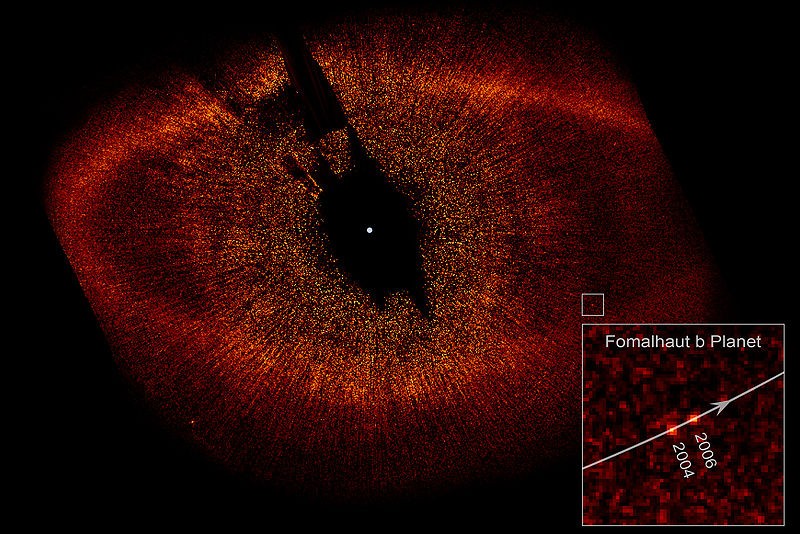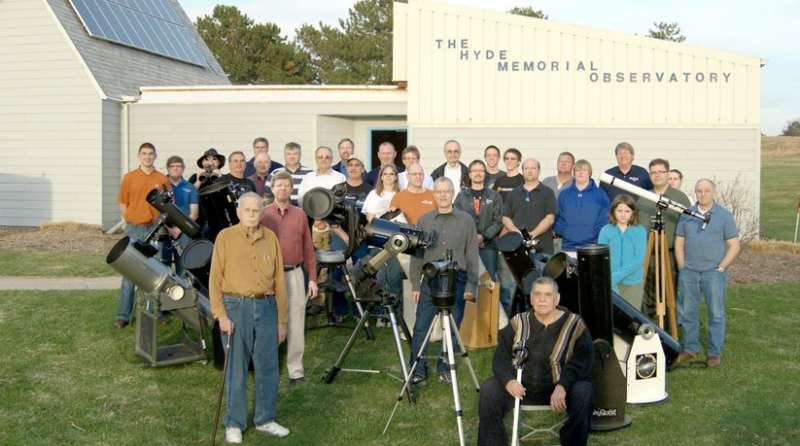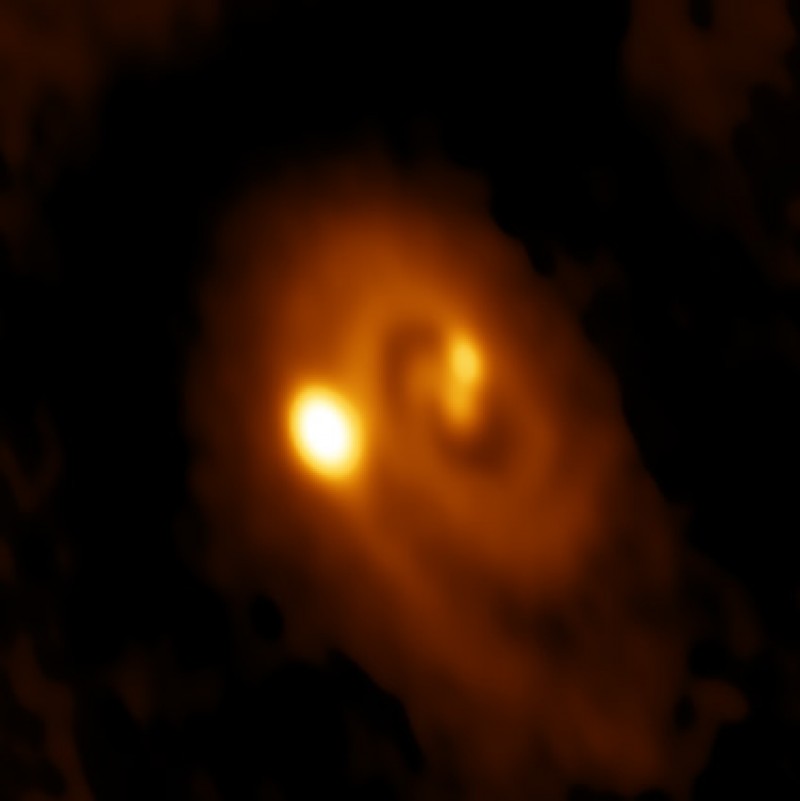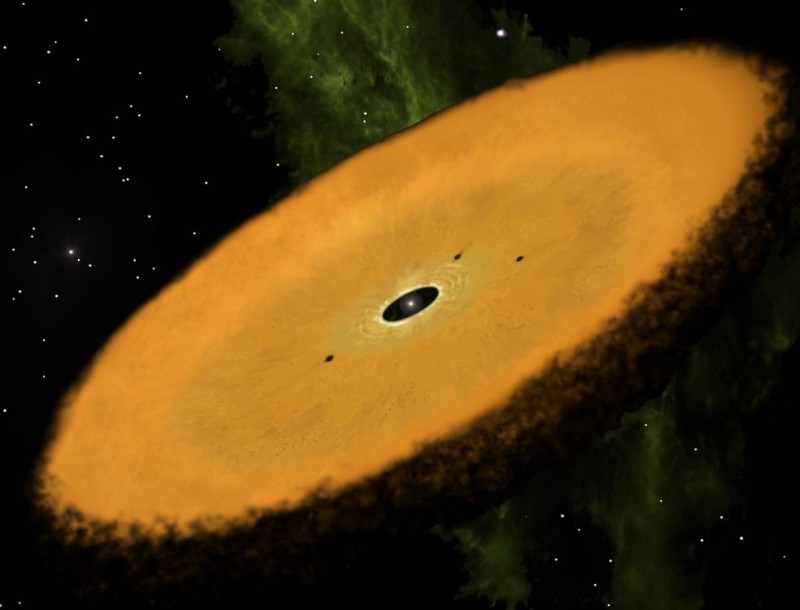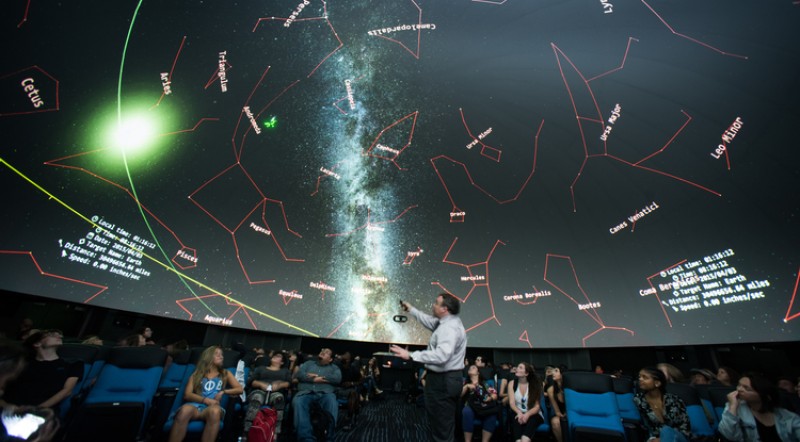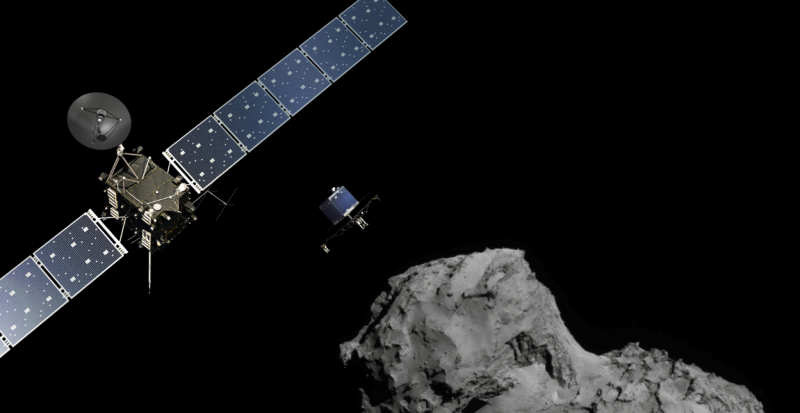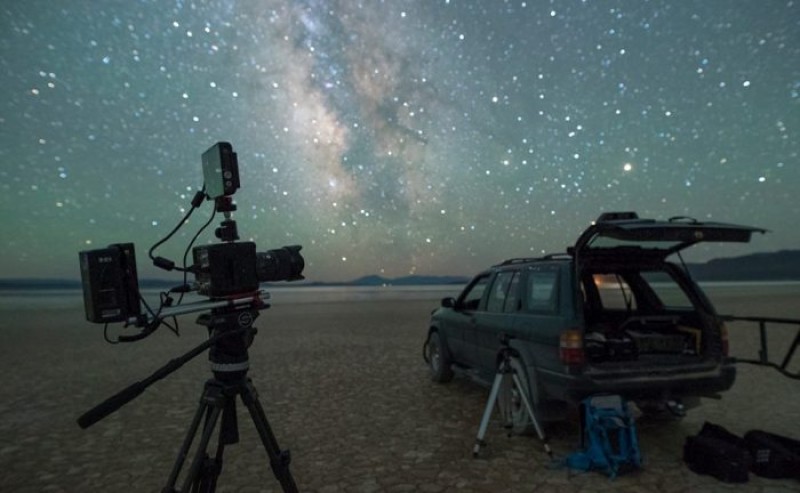Blog
Monster Meterorite Found in Texas
Tuesday, November 8th 2016 09:51 PM
DeeDee and Frank Hommel pose with the 760 pound (345 kilogram) Clarendon (c) meteorite discovered on their land. The stony meteorite may be the second largest single chondrite ever found in the United States. It displays dark fusion crust on the topside; the bottom side, which faced down in the soil, is covered with caliche (ka-LEE-chee), a cement-like mineral deposit of calcium carbonate. Credit: Ruben Garcia, Univers Today
On April 6, 2015, Frank Hommel was leading a group of guests at his Bar H Working Dude Ranch on a horseback ride. The horses got thirsty, so Hommel and crew rode cross-country in search of a watering hole. Along the way, his horse Samson suddenly stopped and refused to go any further. Ahead of them was a rock sticking out of the sandy soil. Hommel had never seen his horse act this way before, so he dismounted to get a closer look at the red, dimpled mass. Something inside told him this strange, out of place bou...
Read More
Read More
How to Find Fomalhaut, the Autumn Star, the Loneliest Star
Thursday, November 3rd 2016 10:53 PM
Fomalhaut as seen from Hubble.
The science of Fomalhaut (pro: foam-a-lot) is pretty cool. Recently, professional astronomers going over a series of 2005 photos from the Hubble telescope found that the young star Fomalhaut has a planet that was formed by the extensive debris ring around it. That's the first exoplanet found.
It's very hard to see the debris ring, from Earth, even with the biggest and brightest telescopes, but Hubble can. But it's easy to find the star because it seems like it's out there all by itself in the Southern sky in a region that is pretty dark and otherwise not too interesting. It's often called the "Ocean in the Sky" and traditionally, it's constellations take on marine-grade names. Fomalhaut is a bastardization of the Arabic for "Mouth of the Fish."
Fomalhaut is kind of out in the middle of nowhere, but it's the third brightest star in the night sky. If you can find the Square of Pegasus, you can find Fo...
Read More
Read More
Astronomy clubs broaden horizons from coast to coast.
Monday, October 31st 2016 05:28 PM
Astronomy clubs are a great way to immerse yourself in a lifelong hobby.
In the United States there are literally hundreds of astronomy clubs and organizations with total membership in the tens of thousands. These clubs serve many functions and services for their membership and community at large. Club members are provided with a forum to meet with and share their common interest in astronomy. Clubs usually cater to all levels of skill and interest recognizing the value of developing new interest in the hobby or activity. Not only do member share ideas and techniques, they bring equipment, giving others an opportunity to see what products are the best fit for their interest.
Many clubs and their membership sponsor events and activities to promote the hobby and expand interest through the community at large. One such example is a club from one of the most active amateur astronomy states in the country, New Hampshire: The New Hampshire Astronomical Socie...
Read More
Read More
Young Stellar System Caught in Act of Forming Close Multiples
Thursday, October 27th 2016 05:47 PM
ALMA image of the L1448 IRS3B system, with two young stars at the center and a third distant from them. Spiral structure in the dusty disk surrounding them indicates instability in the disk, astronomers said. -- Bill Saxton, ALMA (ESO/NAOJ/NRAO), NRAO/AUI/NSF.
For the first time, astronomers have seen a dusty disk of material around a young star fragmenting into a multiple-star system. Scientists had suspected such a process, caused by gravitational instability, was at work, but new observations with the Atacama Large Millimeter/submillimeter Array (ALMA) and the Karl G. Jansky Very Large Array (VLA) revealed the process in action."This new work directly supports the conclusion that there are two mechanisms that produce multiple star systems -- fragmentation of circumstellar disks, such as we see here, and fragmentation of the larger cloud of gas and dust from which young stars are formed," said John Tobin, of the University of Oklahoma...
Read More
Read More
Amateur Astronomers Discover Potential New Hunting Ground for Exoplanets
Monday, October 24th 2016 04:41 PM
Artist’s concept of the newly discovered disk. NASA illustration -- Jonathan Holden
Via a NASA-led citizen science project, eight people with no formal training in astrophysics helped discover what could be a fruitful new place to search for planets outside our solar system – a large disk of gas and dust encircling a star known as a circumstellar disk.
A paper, published in The Astrophysical Journal Letters and coauthored by eight citizen scientists involved in the discovery, describes a newly identified red dwarf star, AWI0005x3s, and its warm circumstellar disk, the kind associated with young planetary systems. Most of the exoplanets, which are planets outside our solar system, that have been imaged to date dwell in disks similar to the one around AWI0005x3s.
The disk and its star are located in what is dubbed the Carina association – a large, loose grouping of similar stars in the Carina Nebula approximately 212 light...
Read More
Read More
Old Hubble Photo Reveals New Moon
Saturday, October 22nd 2016 12:50 AM
The Hubble Space Telescope took this photo of 2007 OR10 on September 18, 2010. Later analysis of the images revealed the presence of a moon (red circle). NASA photo.
The largest known trans-Neptunian object lacking a moon is 2007 OR 10, or actually, was 2007 OR 10. Turns out it does have a moon thanks to analysis of Hubble telescope photography released in a poster by Gábor Marton, Csaba Kiss, and Thomas Mueller recently.
Most of the other big worlds have at least one: Pluto has Charon, Styx, Nix, Hydra and Kerberos; Eris has Dysnomia; Makemake has one discovered this year; Haumea has Hi'iaka and Namaka; Orcus has Vanth; Quaoar has Weywot. Now Sedna is the largest known object out there for which we have not -- yet -- discovered a moon.
With a slow rotation period of 45 hours, astronomers have suspected for a while that 2007 OR10 had a moon, whose tidal interactions with the primary would have been responsible for slowing its rotation. Marton et al...
Read More
Read More
Q&A: University of Arizona Astronomy Dept. Turns 100
Monday, October 17th 2016 05:39 PM
Tom Fleming teaching an astronomy class in the FullDome theater at Flandrau Science Center and Planetarium. (Photo credit: Jacob Chinn/UA Alumni Association)
It all began with a man who was fired for being a good scientist and the wife of the man who started Quaker Oats. One hundred years later, the University of Arizona is the nation's leading university in research dollars expended for astronomical and space sciences.
One hundred years ago, on Oct. 14, Rufus von KleinSmid, then president of the University of Arizona, canceled all classes. Students celebrated with a pep rally and a bonfire, and a press conference was called to announce the first big grant the University had ever received at the time.
An anonymous donor had donated $60,000 – about $1.3 million in today's money – "to build a telescope of huge size."
That gift would transform a dusty patch of farmland into one of the world's powerhouses of astronomy.
UANews as...
Read More
Read More
Uh-oh, You're Going to Need a Bigger Telescope
Friday, October 14th 2016 11:48 PM
Astronomers from the University of Nottingham conducted a new survey of the universe’s galaxy population and concluded that previous estimates lowballed the census by a factor of about 20. Using data from Hubble and telescopes around the world, as well as a new mathematical model, they estimate that there are ten times more galaxies in the observable universe than we thought; previous estimates put the number of galaxies in the universe at around 200 billion.
To understand how the researchers accomplished their task, we first need to understand what they mean by the “observable universe.” Because the speed of light is fixed, we can never get a true picture of what the universe looks like right now. As we look farther and farther away, we must necessarily look further back in time as well.
So, in discovering how many galaxies exist in the observable universe, the Nottingham researchers haven’t discovered how many galaxies exis...
Read More
Read More
Rosetta Crash-landing Ends Historic Comet Mission
Friday, October 7th 2016 05:18 PM
European Space Agency artist rendering of Rosetta on its 12 year mission.
Europe's pioneering Rosetta spacecraft dramatically concluded its 12-year odyssey recently, crash-landing into the comet it orbited and probed for two years in a quest to demystify the solar system's origins.
There were tears, hugs and cheers at mission control in Darmstadt, Germany when spacecraft operations manager Sylvain Lodiot announced: "This is the end of the Rosetta mission."
"Rock-n-roll Rosetta," added a visibly moved Matt Taylor, project scientist, as he left the podium, holding -- and shaking -- his head.
Rosetta made a "controlled impact" with Comet 67P/Churyumov-Gerasimenko at 1041 GMT. Sept. 30 -- the closing chapter in a trailblazing project approved in 1993 to look some 4.6 billion years back in time.
Comets are thought to contain primordial material from our planetary system's birth, preserved in a dark space deep freeze.
Rosetta had been programmed to touch...
Read More
Read More
VIDEO: You Haven’t Seen a Night Sky Video Like This Before
Thursday, September 22nd 2016 10:51 PM
Video still from Infinity2.
The name of the video is Infinity2 by Ben Canales. It’s produced by John Waller of Uncage the Soul Productions. It’s not a timelapse video. It’s realtime and it’s amazing.
It was filmed with the new Canon MH20f-SH at 400,000 ISO which allows Canales and Waller to “film the quiet moments that have been impossible before.”
“I think this one may be the beginning of something damn interesting,” said Canales “Since 2013, I’ve been tinkering with all sorts of camera/lens/software combinations trying to move beyond a long exposure still to real time video of the stars. Sooner or later, we have to move beyond a frozen photo of the stars to hear, see, feel what it is really like being out there!”
Read more: UniverseToday.com
Read More
Read More

